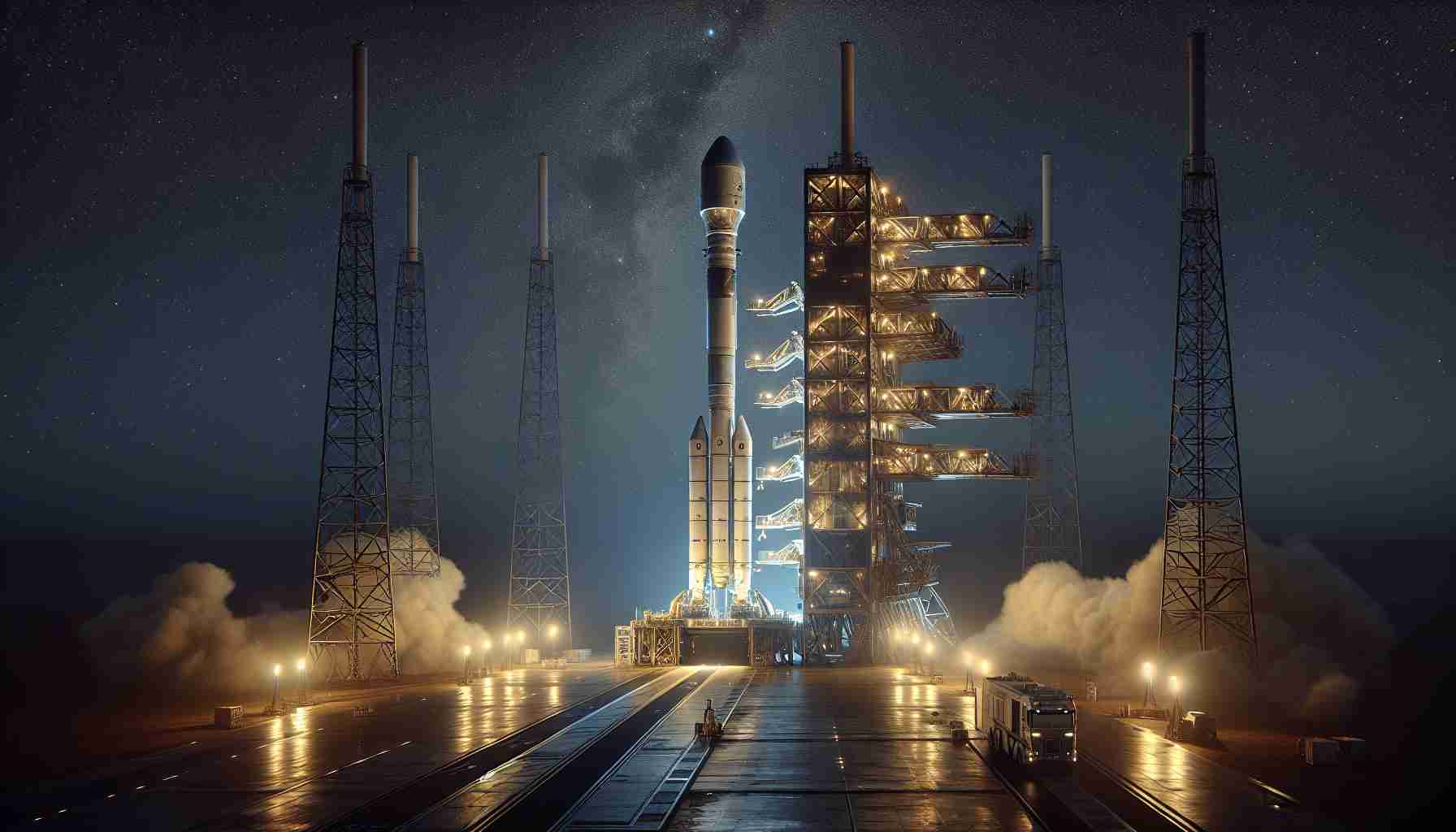
SpaceX is set to enhance its Starlink satellite network with an upcoming launch on October 18 at 4:31 PM PDT from Cape Canaveral’s Space Launch Complex 40. This event will feature a new batch of satellites aimed at providing high-speed internet services tailored for businesses and power users. The launch is significant, marking the 266th rocket launch from the complex, which has a storied history with nearly 1,000 launches.
The mission is projected to cost approximately $52 million. However, meteorological conditions may pose a challenge, as forecasters estimate only a 40% likelihood of suitable weather for liftoff. With a temperature around 75°F, the area may experience overcast skies and winds reaching 20 mph, factors that could impact the rocket’s performance.
Weather experts indicate that while strong onshore winds will prevail, there is a possibility for localized showers. They also emphasize that wind conditions at the launch site are the primary focus, along with potential cloud cover issues on the backup launch date.
As part of the mission, shortly after launch, the first stage booster is anticipated to successfully land on a droneship in the Atlantic. Originally scheduled for October 17, the launch has been postponed, but excitement continues to build for this significant step in expanding Starlink’s capabilities.
October 2023 Marks Another Milestone in SpaceX’s Starlink Expansion Efforts
On October 18, 2023, SpaceX is set to execute a crucial launch intended to expand its Starlink satellite constellation, a project designed to enhance internet connectivity across the globe. This launch, slated for 4:31 PM PDT from Cape Canaveral’s Space Launch Complex 40, is part of an ambitious campaign to provide reliable high-speed internet access, particularly for underserved rural areas and businesses.
Significance of the Launch
The upcoming mission will deploy a batch of new satellites that are critical to maintaining the expansion of SpaceX’s Starlink service, which has rapidly gained traction since its inception. As of 2023, SpaceX has launched over 4,500 Starlink satellites, with plans to eventually deploy around 42,000 to meet increasing global internet demand.
Key Questions and Answers
1. What are the primary goals of the Starlink mission?
– The main objectives are to improve network latency, increase bandwidth capacity for customers, and extend service availability to more regions around the world.
2. How does Starlink benefit rural areas?
– Starlink provides fast and reliable internet connectivity in rural regions where traditional broadband options are limited or unavailable, helping to bridge the digital divide.
3. What is the expected impact of Starlink on global internet services?
– Starlink aims to increase competition in the internet service market, potentially driving down prices and improving service quality.
Challenges and Controversies
Despite its potential benefits, the Starlink project faces significant challenges. One major concern is the risk of space debris. The sheer number of satellites being launched raises worries about collisions in low Earth orbit, which could exacerbate the problem of space junk.
Another controversy revolves around the impact on astronomy. Astronomers have expressed concerns that satellite constellations like Starlink can interfere with observations of the night sky due to their visibility and brightness. SpaceX has made efforts to mitigate this issue with dark coatings and by adjusting orbits, but the debate continues.
Advantages and Disadvantages of Starlink’s Expansion
Advantages:
– Global Coverage: Offers internet services in remote and underserved areas.
– High Speed and Low Latency: Can provide competitive internet speeds compared to traditional services.
– Disaster Recovery: Serves as a reliable communication tool in emergencies when ground infrastructure is damaged.
Disadvantages:
– Space Debris: Increased risk of collisions and space pollution.
– Interference with Astronomy: Potential for disruption in astronomical observations.
– Cost: The service may still be costly for some consumers, especially in developing regions.
As the launch date approaches, meteorological conditions remain a point of concern, with experts projecting only a 40% chance of favorable weather. Localized showers and strong winds could significantly affect the launch’s outcome.
For those interested in the broader implications of satellite internet, further readings can be found at SpaceX and Starlink to explore the future of global connectivity and the innovative technologies transforming internet access.



